Can You Shower With a Pearl Bracelet?


Pearls have always been highly valued because they are both beautiful and classic. Whether as a necklace, earrings, or bracelet, there is an inherent sense of luxury and style when you wear pearls – but like any piece of fine jewelry, it's important to know how to look after them properly.
One query that frequently crops up is whether it is safe to shower while wearing a pearl bracelet. After all, we love the feel of warm water running over our bodies every day…but could this be damaging to our beloved pearls?
In this article, we will look more closely at caring for pearls in general before exploring whether you can wear your much-loved pearl bracelet with confidence in the shower. So let us discover: Is it safe to shower with a pearl bracelet on?
Understanding Pearls
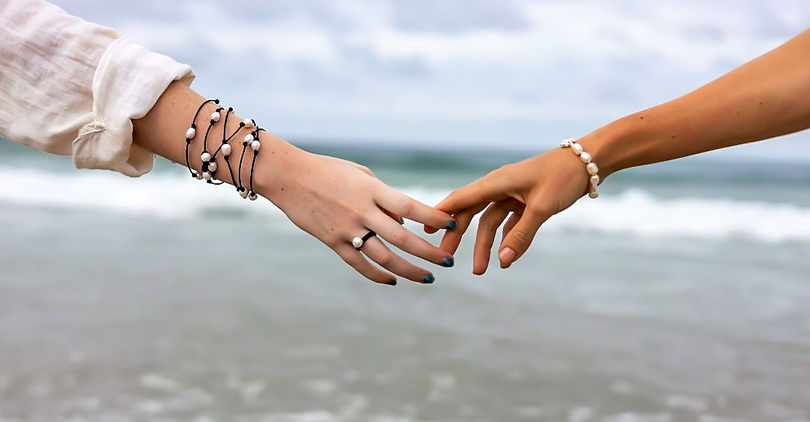
To fully appreciate pearls and know how to take care of them helps to understand the science behind these beautiful gems. Pearls are not like other gemstones.
They're made up in a way that sets them apart.
Diamonds and rubies, for example, are created deep within the Earth's crust. Pearls, on the other hand, come from living organisms: mollusks. What's more, the composition of pearls is intriguing. These exquisite jewels form when an irritant – maybe a grain of sand or parasite – makes its way into the soft tissue of a mollusk.When a foreign object, such as a grain of sand or parasite, enters a mollusk, the animal defends itself by secreting multiple layers of nacre – the substance that gives pearls their beautiful shine.
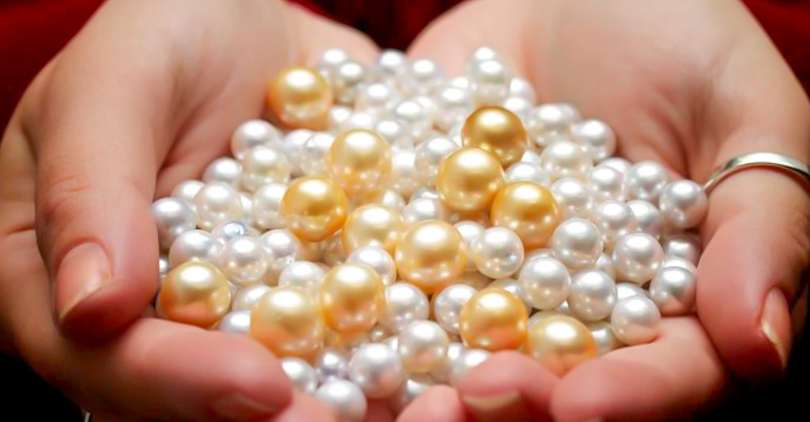
Nacre contains organic substances, including proteins and water, as well as aragonite crystals. It is these crystals reflecting light off each other that gives pearls their unique luster.
Both how thick these layers are, and their quality determines both their worth and how long a pearl will last. Knowing this also helps one understand why caring for them correctly retains natural beauty over time—such as not showering while wearing pearl jewelry!
Impact of Water on Pearls
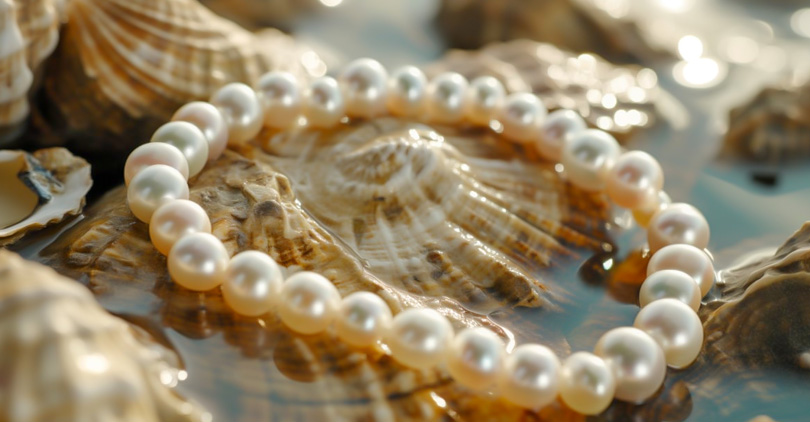
As pearls are very delicate, they react to their surroundings, and water is an important factor in their care. Freshwater pearls and saltwater pearls (Akoya pearls, White and Golden South Sea pearls, and Tahitian pearls) come from different sources and have different make-ups.
Freshwater pearls are grown in rivers or lakes and tend to be tougher as they have thicker nacre (mother of pearl) compared with saltwater pearls. These develop in oysters from the sea, and so have thinner nacre, which makes them more fragile.
However, both types can be damaged by the chemicals present in tap water every day. Chlorine and fluoride are often found in tap water. They are used to cleaning it and keeping our teeth healthy, but they don't do pearls any good at all!
Take chlorine as an example. It has bleaching agents, which can slowly remove the beautiful color from your pearls, leaving them looking lackluster. Likewise, fluoride can cause your pearls to change hue or even eat away the top coating that gives them their brilliant luster!
Temperature Sensitivity
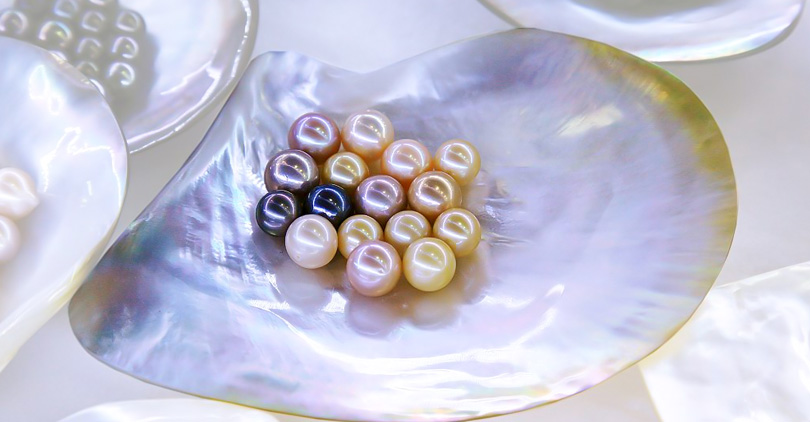
Pearls are sensitive to changes in temperature, so you need to take care of them. Unlike other gems, pearls have an organic make-up – they're made by mollusks. That's why extreme temperatures can damage them.
Hot water from a shower is bad news for pearls. The heat may cause the layers of nacre (the lustrous surface that gives pearls their beauty) to expand and become weak. Eventually, this could lead to cracks or even the pearl falling apart altogether!
While exposure to cold water isn't as harmful, sudden temperature shifts can still spell trouble for pearls. Putting them under duress like this might just increase the risk factor for breakage or weakness.
Shower Products and Pearls
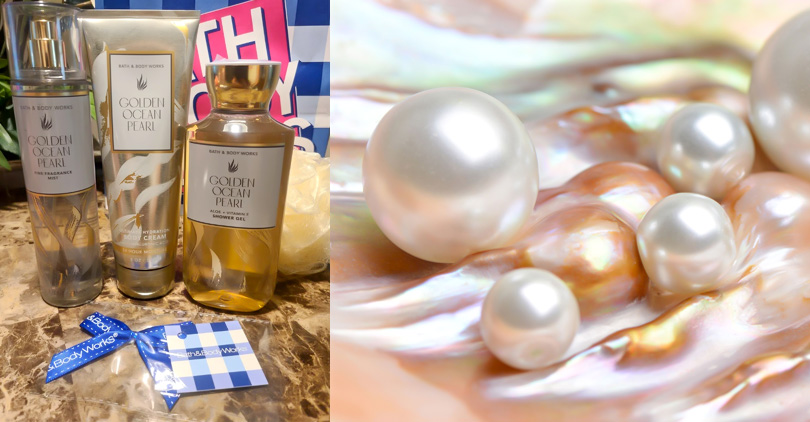
Using shower products such as lotions, conditioners, soaps, and shampoos can have an effect on how long your pearls last and how vibrant they appear. Pearls are made up of layers of nacre – an organic gemstone – meaning that they're sensitive to everyday chemicals.
The truth is that many soaps contain fragrances and harsh detergents capable of removing the natural oils responsible for giving pearls their shine and lustre. Over time these substances create build-up on the pearl itself which can make it appear dull.
On the other hand items such as conditioner or lotion have ingredients like oil or emollients that if allowed to soak into the pearl may cause staining as well as a loss in radiance.
To maintain their glow, take off pearl jewelry before showering or putting on any lotions or potions. Pearls lose when exposed to substances like these. Protecting against everyday chemicals will help ensure longer-lasting luster.
Physical Risks of Showering with a Pearl Bracelet
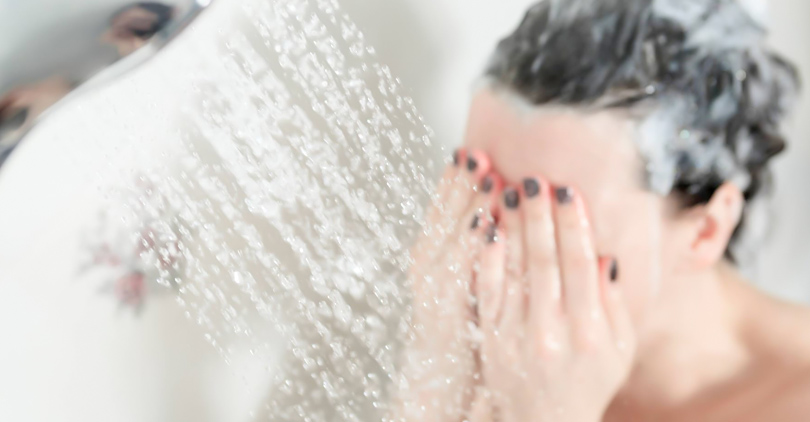
If you have a pearl bracelet, avoid wearing it in the shower. Pearls are organic gems and can be damaged by water and any kind of rough wear: Physical Damage
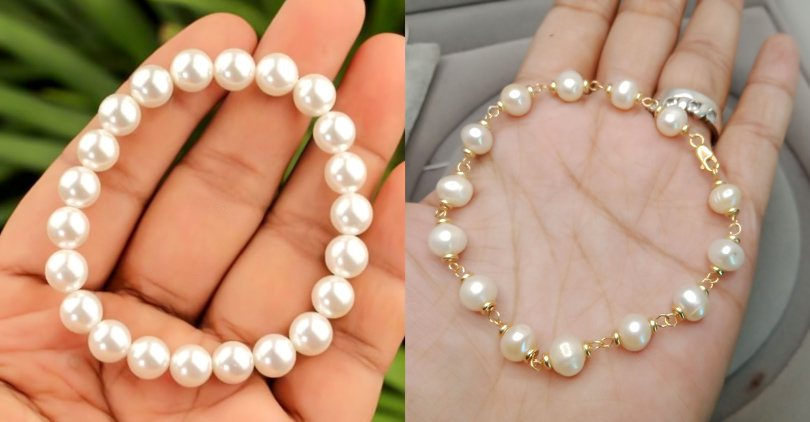
In the shower, there are hard surfaces like walls and fixtures that could cause your bracelet to get knocked or scraped. For example, while you're shampooing your hair, it would be easy for one accidental movement to bash the bracelet against both the faucet and shower wall.
Pearls are relatively soft compared to other gemstones: On the Mohs scale of mineral hardness – which runs from 1 to 10, diamonds rank highest at 10, and pearls rank between about 2.5 and 4.5.
This means they can easily scratch and chip. If pearl jewelry bumps even slightly against any hard surface, it may develop tiny chips or scratches in its nacre (the lustrous outer layer) that will dull its brilliance over time.
Repeated impacts might also dent or otherwise damage metal clasps or settings, possibly affecting both their appearance and function.
String Weakening
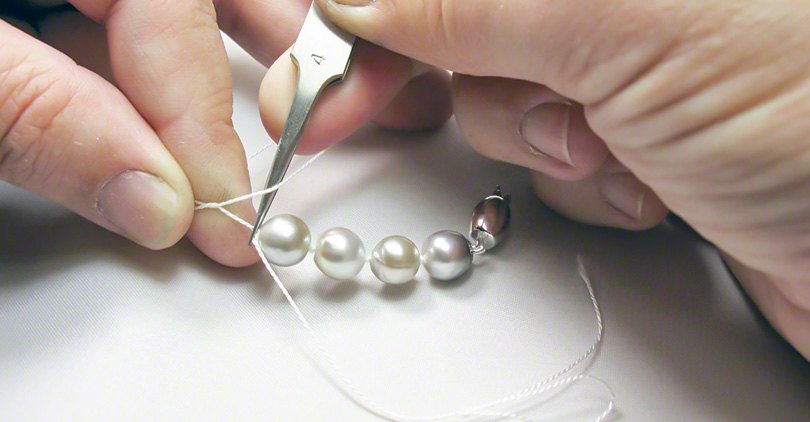
Exposure to water can gradually weaken the string or clasp holding a pearl bracelet together. Most pearl bracelets use silk or nylon thread – strong choices that are nonetheless vulnerable to water damage.
When you wear your bracelet in the shower, for instance, the string soaks up water and becomes both weaker and stretchier with time. This may cause it to fray or even snap, putting precious pearls at risk.
If you shower while wearing your bracelet every day, you might see signs of wear on the string within just a few months – with breakage soon after.
Metal clasps, too, can suffer from being worn regularly in water, especially if there is chlorine or other chemicals present. These substances can eat away at the metal over time, making a clasp more likely to give out on you.
Just think how awful it would be if one day down the drain went a much-loved bracelet because its clasp had corroded away after years' worth of showers!
Best Practices for Caring for Your Pearl Bracelet
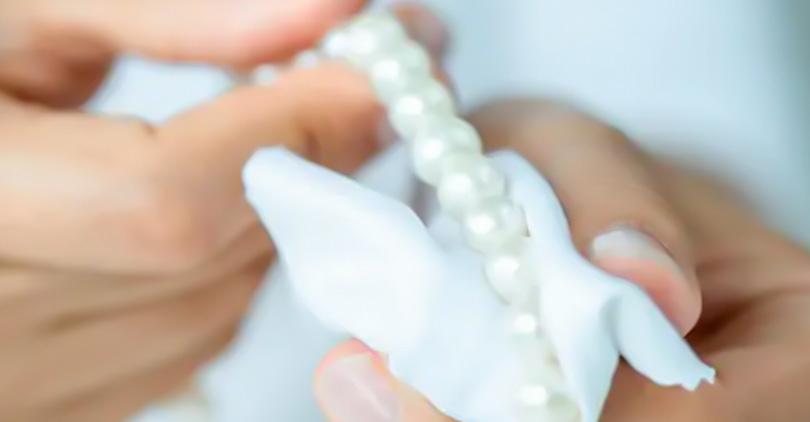
Caring for your pearl bracelet appropriately will help it stay beautiful and elegant throughout time. To take care of your pearl jewelry, here are some best practices:
The Right Way to Clean
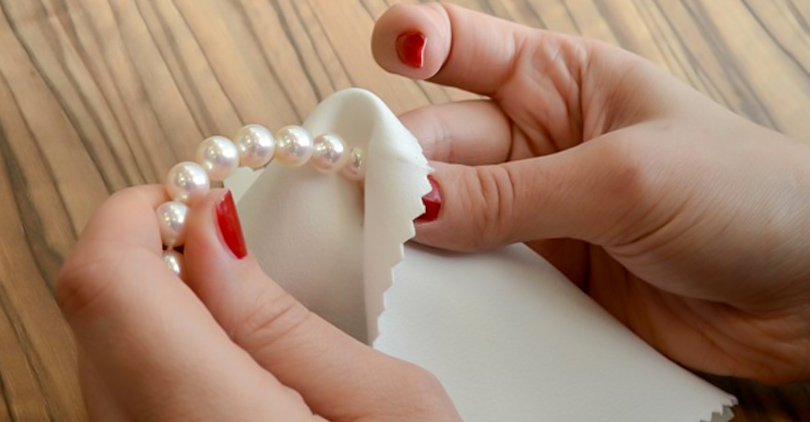
Being gentle is important when cleaning pearls. After wearing them, wipe down your bracelet with a soft damp cloth to remove any oils or dirt. If you need to do a deeper clean, use a mild soap and lukewarm water solution.
Avoid using harsh chemicals, abrasive cloths, or ultrasonic cleaners, as these can all cause damage to the delicate nacre (mother of pearl). Use a soft-bristled brush if necessary to get into nooks around the clasp or between the pearls themselves.
How to Store Your Bracelet
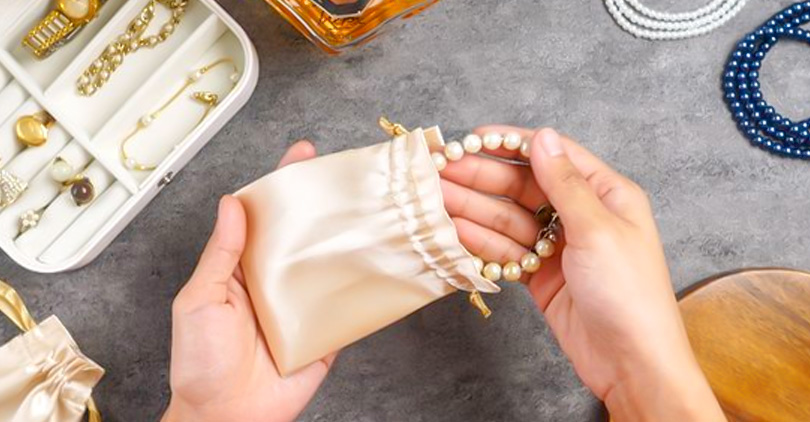
To avoid scratching your pearl bracelet, keep it in a soft pouch or jewelry box lined with fabric – and store it separately from other jewelry so nothing tangles or rubs against it.
Pearls like fresh air, so don't seal them into plastic containers. And definitely don't leave these gems lying on a windowsill. Too much heat or cold from the sun can make them crack or yellow. Instead, find a cool space away from direct sunlight.
Regular Maintenance for Pearl Bracelets
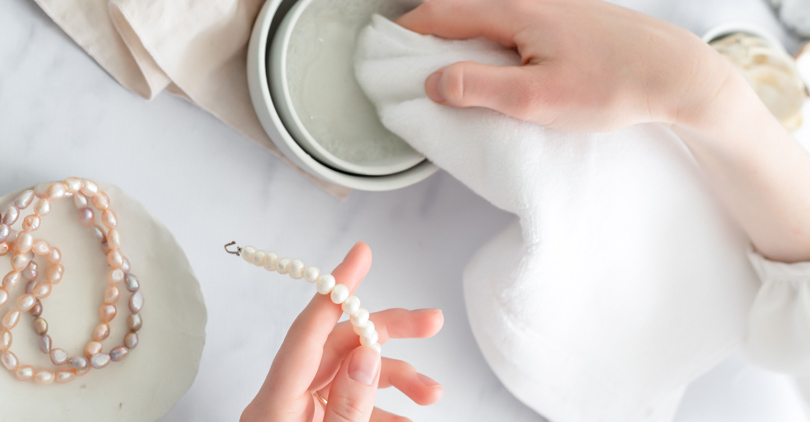
A pearl bracelet requires professional cleaning and stringing if you want to keep wearing it. Once every year, have your bracelet cleaned by an expert. They'll make sure the pearls stay shiny without harming their surface luster.
The thread that holds your pearls together may weaken over time so take your piece in every 12-24 months for restringing — particularly necessary if worn often — as this prevents breakages and loss of any beads.
Conclusion

It might not be a good idea to shower with your pearl bracelet if you want to keep it looking beautiful. The chemicals in soap, shampoo, conditioner, and lotions can dull pearls' luster over time.
To make sure your favorite accessory stays with you for years to come, take it off before you hop in the shower or put on any beauty products.
By keeping pearls out of harm's way, you'll be able to enjoy their radiance for longer. Share your experiences or ask any questions about pearl care in the comments below – we'd love to hear from you!


Leave a Comment